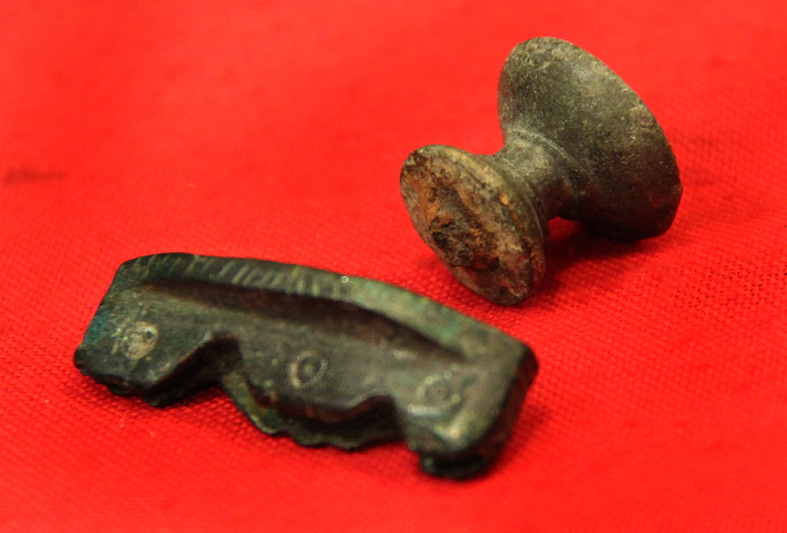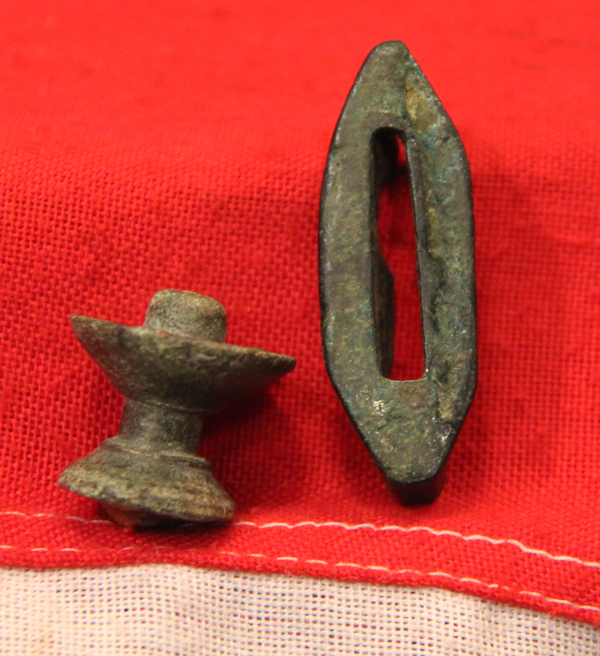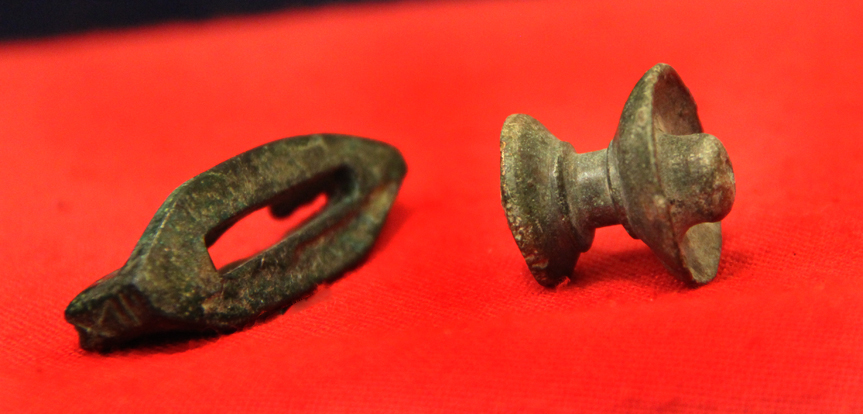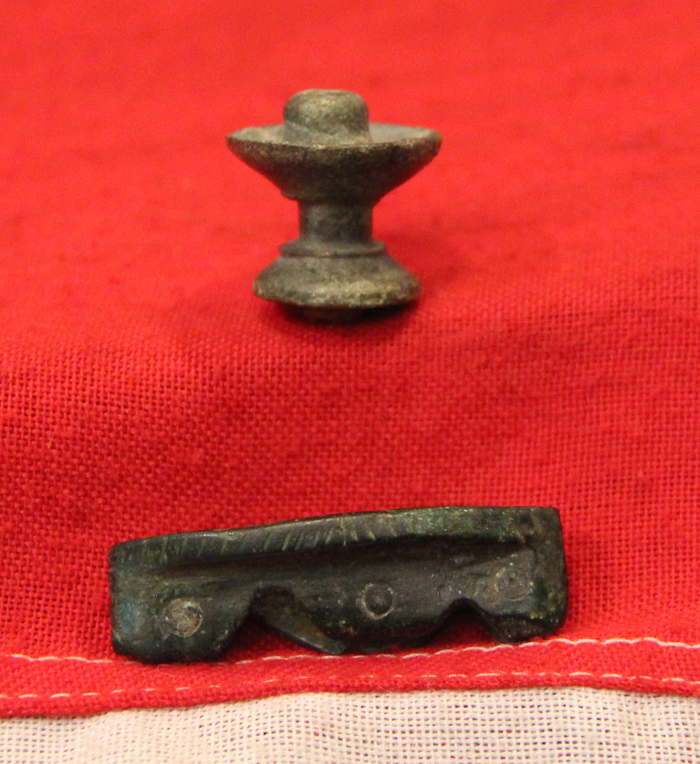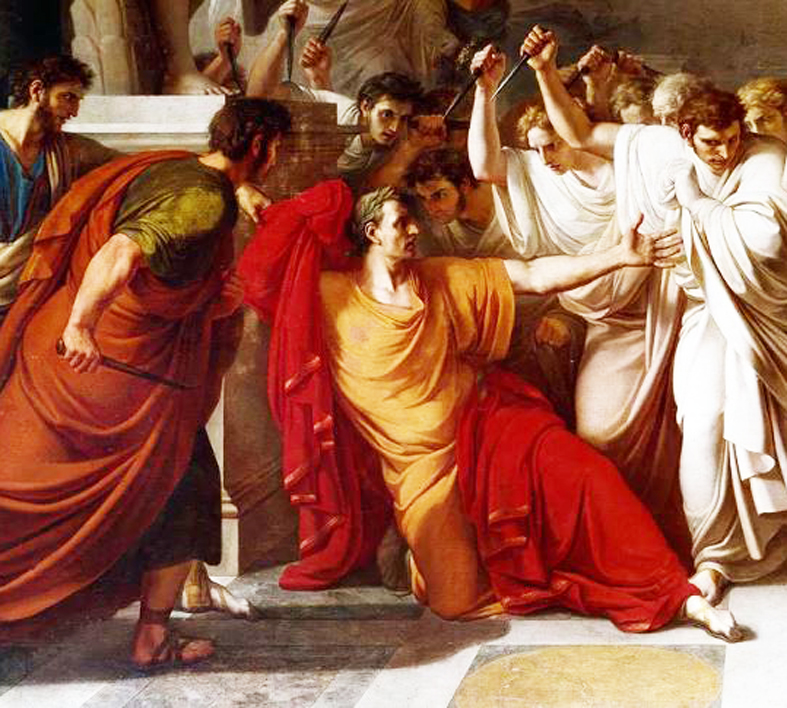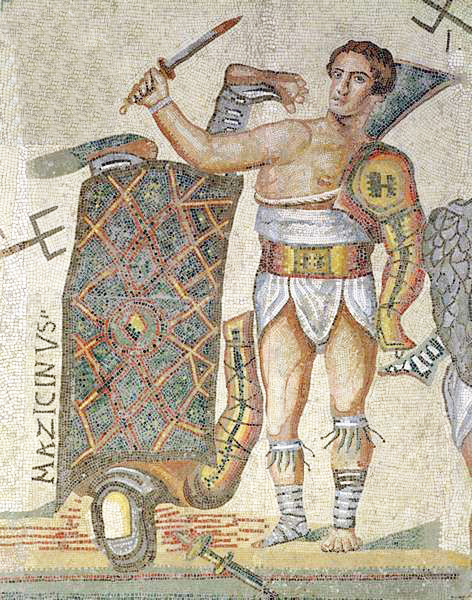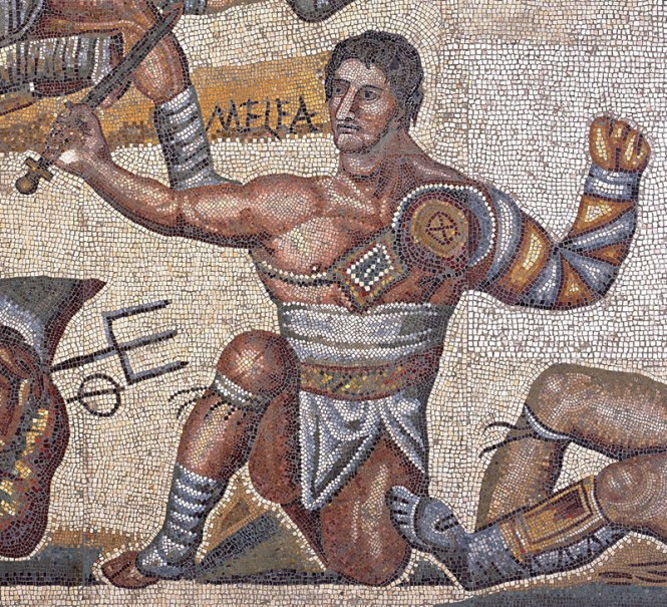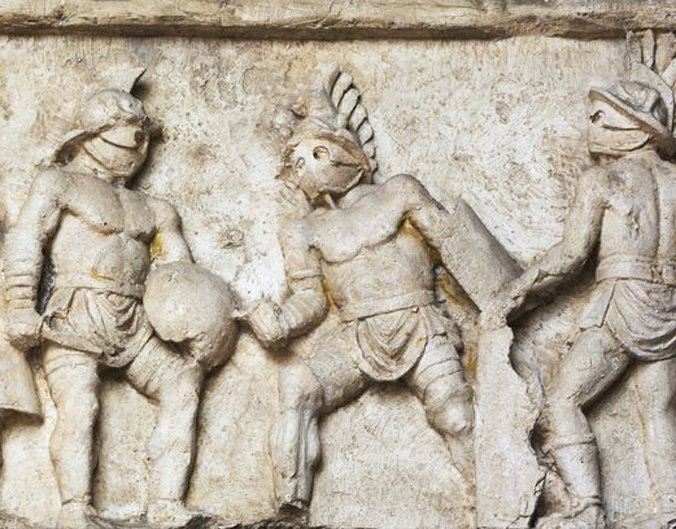A Super Roman Dagger Pommel and Scabbard Mount. Around 2000 Years Old, From 100 bc to 100 ad
From the Roman Republican to Imperial Rome era. Made for and used by a Roman noble, senator or gladiator. It may even be the same form of dagger that was used to assassinate Caeser on the Ides of March. The blade grip and scabbard have not survived as is more than usual. A superb pair of Roman dagger mounts from the historical time of Julius Caeser, the first Emperor, Augustus, Mark Anthony and Cleopatra, and last, but not least, Jesus of Nazareth. The Ides of March comes from the ides, a term the Romans used to note the middle of a month. Every month has an ides around the middle (as well as a calends at the beginning of the month and nones eight days before the ides). The Ides of March feels special for a couple of reasons: it's the day Caesar was murdered, and it's the subject of a soothsayer's spooky prophecy in William Shakespeare's Julius Caesar. Before Caesar, Roman nobility and military were free to plunder the provinces they ruled. But under Caesar, Rome controlled the process and sent inspectors to check up on everything, so they could only exploit their provinces under Caesar's supervision.
That slight was compounded by Caesar's rebranding of political real estate in his name ? he built statues in his image and renamed monuments for himself. He brought power to his family by giving them political appointments and honorifics, and drew allies outside the charmed circle of Roman nobility, like his soldiers and leaders in the provinces. As far as epic betrayals go, we tend to imagine Brutus in the same league as Judas. In reality, that infamy should be reserved for someone called Decimus.
Caesar trusted Decimus much more than he trusted Brutus ? and that made his betrayal more shocking. Misspelled in Shakespeare's Julius Caesar as "Decius," Decimus was much more important than most of us realize. "There were three leaders of the assassins' conspiracy, Brutus, Cassius, and Decimus." Decimus dined with Caesar the night before his assassination and convinced Caesar to leave his house the next morning (he was staying home because his wife, Calpurnia, was worried). Decimus' betrayal followed an adult life spent at Caesar's side. Brutus, however, had often fought against Caesar, like when he took Pompey's side against Caesar in the Civil War that lasted from 49 to 45 BC. He only came over to Caesar's side after a handsome cash award and profitable political appointment. When he was stabbed, most of the sources say he tried to get up and escape. Unfortunately for Caesar, the conspirators were trained soldiers, so they'd formed a tight perimeter. "They knew how you carry out an ambush,and some of the senators were assigned the job of crowd control."
As far as what Caesar said when he died, "Et tu, Brute" is a Renaissance invention. But Caesar did perform a few resonant gestures. He tried to escape, like any soldier would, but when death was near, he covered his face before he died. It may have been an attempt to preserve his dignity. Bibilography; Professor Strauss, Cornell, Classics and History. As with all our items it comes complete with our certificate of authenticity.
Code: 21864
385.00 GBP

